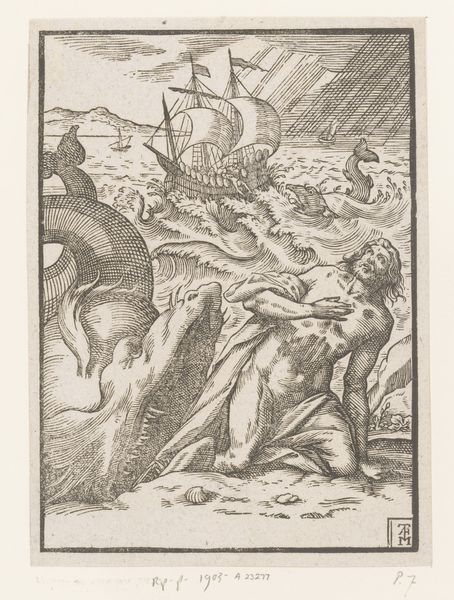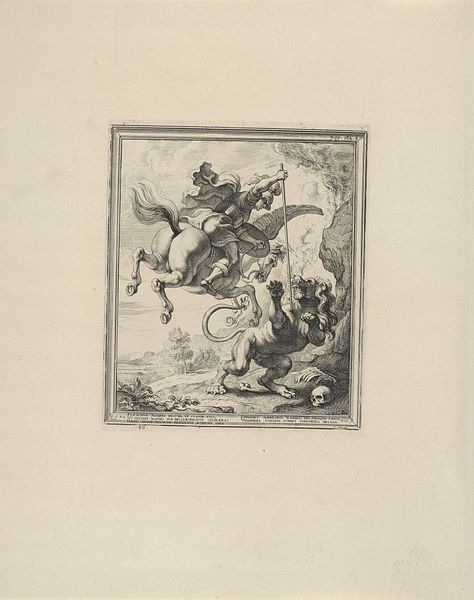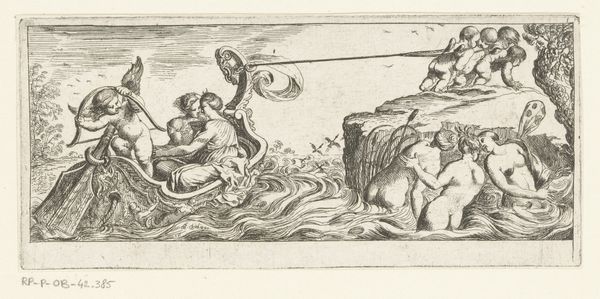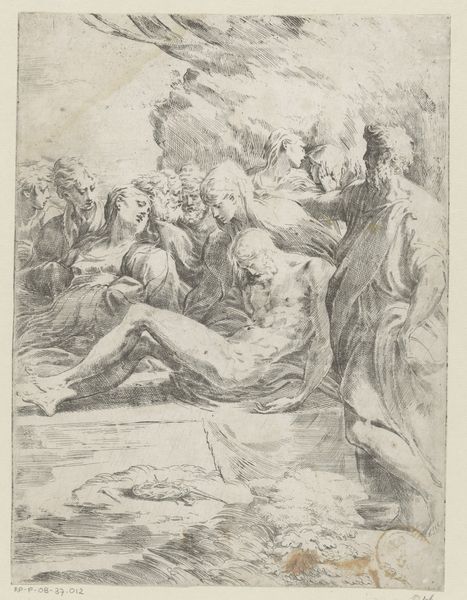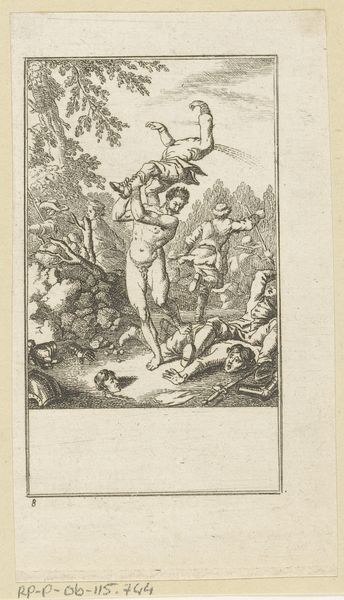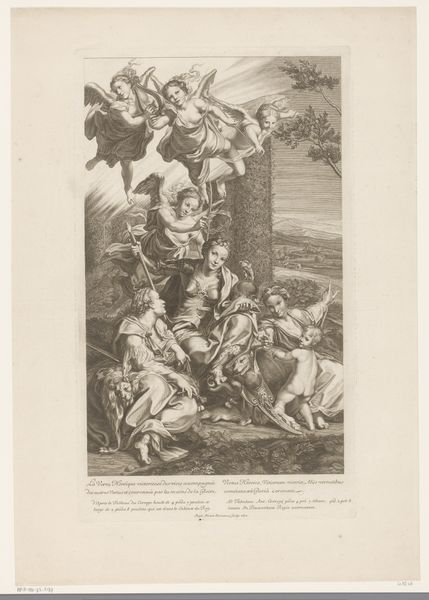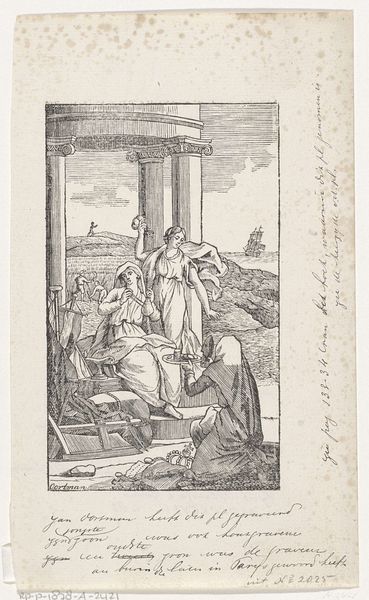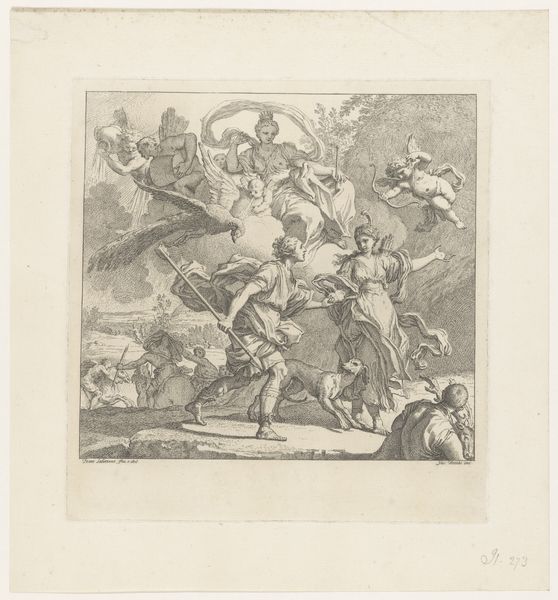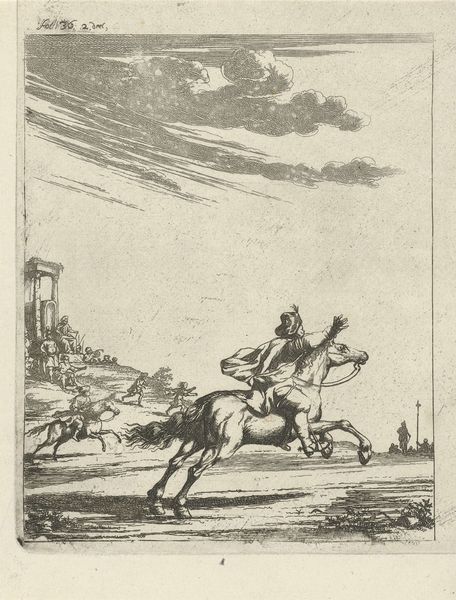
Dimensions: height 110 mm, width 59 mm
Copyright: Rijks Museum: Open Domain
Curator: Let's talk about "Orlando en zijn gevechtspartner raken te water" by Louis Wilhelm Chodowiecki, made around 1771-1772. It's an engraving, so a print, showcasing quite a dramatic scene. Editor: Indeed. At first glance, it feels quite chaotic, yet there is this weird serenity about it; especially with the elegant figure on the horse contrasting the struggling man in the water below. It really draws your eye in and then quickly pulls it down. Curator: Chodowiecki worked primarily as an engraver. Given that he provided illustrations for popular novels and magazines, and catered to middle-class audiences, his works can be analyzed through the lens of accessibility. Engraving made art available to a wider segment of society. Editor: Interesting perspective. If we consider only its aesthetic properties, the stark contrast between the still rider, horse, and the turbulence below create an amazing pictorial dynamic. Chodowiecki masterfully manipulates line to convey both the rigidity of the architecture on the upper left, and the dynamic flow of the water. Curator: The engraving technique itself contributes to the narrative. Each etched line involved human labor, connecting to wider systems of production and the consumption of visual media during the late 18th century. These were produced and circulated in multiples for wide dissemination. Editor: You are completely right. Although that can easily be ignored at first due to how simple the line art makes the work feel on the surface, no pun intended, because there is a lot more below than what you can easily see. The work's balance and harmony are quite remarkable, no matter how its components may contrast one another. Curator: So we can observe here the distribution methods enabled by the printmaking medium helped to disseminate imagery, fostering social narratives. This has strong relevance and ties to modern-day social and mass media, as this kind of media creates and defines ideas in societies. Editor: Yes. Analyzing the material and production aspects allows for insights on how images were consumed and used to shape the perception of audiences from all social classes. Thank you for contextualizing this complex but rewarding work. Curator: Of course. Examining production provides very useful context for interpreting the aesthetics.
Comments
No comments
Be the first to comment and join the conversation on the ultimate creative platform.

